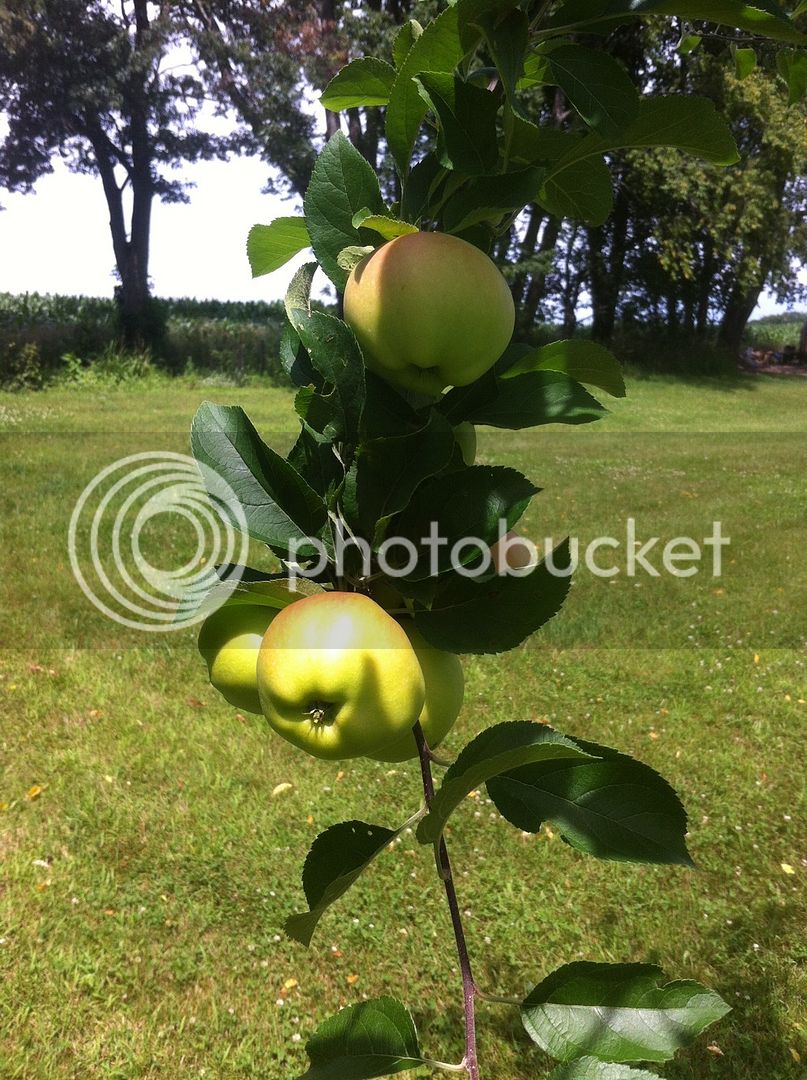My dad has several crabapple trees out as his place. A year ago, and the year before, the apples were of pretty good size, and tasted great, even if a little tart. This year, all were about the diameter of a nickel, with a few as big as a quarter - if you counted all of the trees, there just
might be enough for a batch of wine. I tried a few crabapples off different trees and the huge majority of them were extremely astringent - much, much moreso than even the "puckeriest" chokecherry I've ever had - and very sour, too, and not in a good way.
My youngest son, who was with me at the time, said that he knew of another crabapple tree near where he walks to and from school so we went to check it out. When we got there, I was disappointed to see that the apples appeared to be the red, "ornamental" type, but since he was trying to be helpful, I stopped and took a closer look. The first thing that I noticed was that quite a few of them had dropped to the ground (our first frost was this past Monday night/Tuesday morning). Walking through the downed fruit to the tree, the apple aroma that rose up was incredible - I would almost go as far as to say intoxicating. It was pure, wonderful apple at its best, and I literally could have sat there and smelled it all night. With growing optimism, I plucked a couple that were still on the tree, and they had truly excellent flavor - sweet with a nice, balancing tartness and a little something extra that I can't describe, but liked very much. I began thinking that these might work after all, at least for this year.
I went home to do a little looking on the internet, and I am "fairly certain" that the crab apples that my son discovered are the variety known as "Dolgo" crabapples. I was able to find this information on them:
http://www.naturehills.com/dolgo
I don't ever recall driving by and seeing what the blossoms looked like in the spring, but everything else fits very well. The tree itself looks exactly like the one in the photo on that site, and includes the "shiny, deep-green foliage" discussed in the commentary. Also, the description states that it is a hardy tee for cold-weather climates, which would very well describe our area (Zone 3). The picture of the large, plum-like fruits looked just like the ones one saw, except the ones we saw might have been just a tiny bit more oval-shaped.
Best of all was this:
As attractive as this well-known tree is, its just as valued for its juicy fruit that is sure to attract birds and wildlife
as well as friends and neighbors.... The brilliant crimson fruit ripens in August and are about the size of small plums. Sweeter and larger than other crabapples, the fruit is excellent for eating fresh, making pies, butter, jams, jellies, ciders and sauces.
Based on all of this, I decided, with a fair amount of confidence, to give these crabapples a try this year; we went back over as the sun went down and picked just over 7 pounds of them, and I think they will do quite well.
They are currently in the freezer; I will get this project going as soon as possible - most likely after my upcoming Flathead Cherry and Chokecherry (2nd batch) wines are in the fermenters and mellowing out.






![Craft A Brew - Safale BE-256 Yeast - Fermentis - Belgian Ale Dry Yeast - For Belgian & Strong Ales - Ingredients for Home Brewing - Beer Making Supplies - [3 Pack]](https://m.media-amazon.com/images/I/51bcKEwQmWL._SL500_.jpg)






















































